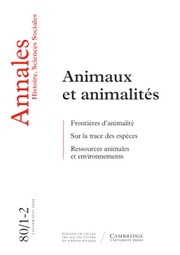Article contents
L'empire des Bacwezi. La construction d'un imaginaire géopolitique
Published online by Cambridge University Press: 25 May 2018
Extract
La construction d'espaces imaginaires n'est pas réservée aux cultures populaires africaines. L'historiographie et l'ethnographie modernes, à l'intersection des traditions orales et de l'écriture savante, ont même été des lieux privilégiés de la cristallisation des mythes, comme dans la Grèce archaïque selon les analyses récentes de Marcel Détienne. C'est ainsi que des lignages, des ethnies, des potentats locaux ont pu se voir attribuer, sous des plumes autorisées, des ancêtres prestigieux, localisés tantôt dans des États lointains, mais réels (l'Ethiopie, le Mali, la Perse…), tantôt dans des royaumes d'autant plus merveilleux qu'ils avaient été forgés avec un grand flou artistique. Nous entreprenons de démontrer ici que c'est le cas du fameux « empire des Bacwezi », qui a reçu une sorte de label d'historicité à force de peupler toutes les synthèses sur l'histoire ancienne de l'Afrique orientale.
Summary
According to contemporary historiography the kingdoms of the great lakes of East Africa are to be derived from the former empire of the Kitara governed by the Bacwezi dynasty. A careful rereading of the written, oral, and archeological sources enables this interpretation to be called into question. The legendary cycle of the Bacwezi, kept up notably by the initiation cult of the Kunbandwa which was common to all the cultures of the region, gave rise to the ethnic and racial hypotheses of the first European explorers and was utilized by local ruling groups who felt themselves victims of the political transformations of the 19th century (particularly in the former State of the Bunyoro). The archeological proofs equally appear as questionable extrapolations. The history of this “empire” is that of the construction of an imaginary political space within an African culture.
- Type
- Espaces Politiques et Espaces Mythiques
- Information
- Copyright
- Copyright © Les Éditions de l'EHESS 1985
References
Bibliographie
- 15
- Cited by


